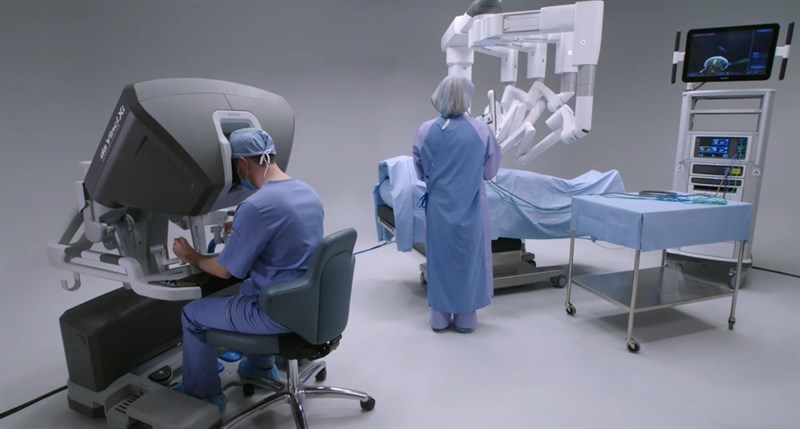da vinci surgical system how it works

The final category of robotic surgery devices is the shared-control system. We’ll learn more about this kind of robot on the next page.
In using da Vinci for surgery, a human surgeon makes three or four incisions (depending on the number of arms the model has) — no larger than the diameter of a pencil — in the patient’s abdomen, which allows the surgeons to insert three or four stainless-steel rods. The robotic arms hold the rods in place. One of the rods has two endoscopic cameras inside it that provide a stereoscopic image, while the other rods have surgical instruments that are able to dissect and suture the tissue. Unlike in conventional surgery, the doctor does not touch these surgical instruments directly.
Da Vinci can be used to treat:
- Kidney disorders
- Kidney cancer
- Bladder cancer
- Coronary artery disease
- Colorectal cancer
- Uterine disorders
- Gynecologic cancer
- Endometriosis
- Prostate cancer
- Throat cancer
- Mitral valve prolapse
- Uterine prolapse
- Uterine fibroids

Another common type of minimally invasive surgery—and our topic for the day—is robotic surgery, in which doctors can perform many types of complex procedures with more precision, flexibility, and control because they are being assisted by a robotic system that enhances their capabilities and helps them overcome many of the limitations of minimally invasive surgical procedures.
While there are a variety of robotic surgery processes, the vast majority will involve a surgeon sitting at a special console with hand and foot controls that allow them to remotely and precisely control surgical instruments attached to robotic arms. Adjustments can also be made to change the scale of the robot’s movement. For example, a three-to-one scale would mean that the tip of the robot’s arm will move one inch for every three inches the surgeon’s hand moves. To see, a small 3D camera is inserted into the patient through a very small incision, which gives them a magnified 360° view of the operative field on a high definition monitor that essentially places them inside the patient. A second surgeon or surgical technician will also be positioned near the patient to confirm the correct placement and function of the surgical instruments.
- Initially, the surgeon and robotic team work together to place the robot in the most ideal position for the procedure, strategically placing the robotic arms.
- Throughout the robotic surgery the surgeon sits at a special console near the patient and surgical team.
- A very small 3D camera and dime-sized surgical instruments are placed inside the patient through tiny incisions. The camera gives the surgeon a magnified 360 degree view of the operative field.
- Using the console’s hand and foot controls, the surgeon remotely moves the robotic arms attached to surgical instruments. Surgical technicians are positioned at the operating table to confirm the correct placement of the surgical instruments. Registered Nurses are present as well to assist the anesthesia provider and monitor patient needs and safety during the procedure..
The process. While the procedures vary, the process of robotic surgery typically involves the following:

We also know many patients are concerned about the idea of a robot performing surgery. You should know that the Robotic Surgical System is really a system that allows your surgeon to make precise, delicate motions while controlling the machine. The robot is never, ever making decisions or performing incisions. Rather, your surgeon is telling the robot what to do, and the robot allows for greater precision than the human hand on its own.
Think of the Robotic system system like a video game. When you play a video game, you move a control button, and the machine translates your movements into real-time, mimicking your moves precisely on the screen. During a Robotic-assisted procedure, your surgeon uses master controls to manipulate the instruments, and the instruments translate your surgeon’s movements into precise movements inside your body. Your surgeon is in control the whole time; the surgical system responds to the direction he provides.
Resources:
http://www.drugdangers.com/da-vinci/robotic-surgery/
http://surgical-solutions.com/blog/what-is-robotic-surgery-and-how-does-it-work/
http://guttenberghospital.org/services/roboticsurgery/find-a-surgeon-preparing-for-surgery-surgery-news-day-of-surgery-robotic-surgery-how-does-it-work-meet-our-team-gynecological-surgery-urology-surgery-colorectal-surgery-partial-knee-replacement-st-l/
http://www.uclahealth.org/robotic-surgery/what-is-robotic-surgery
http://www.britannica.com/biography/Leonardo-da-Vinci
